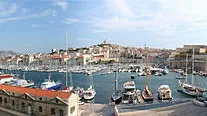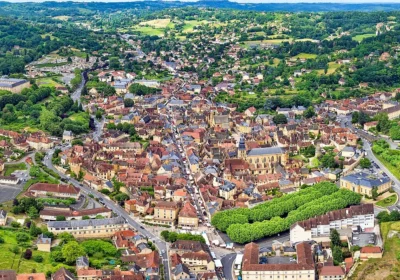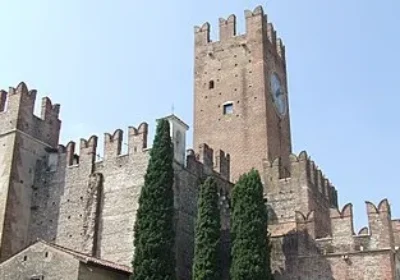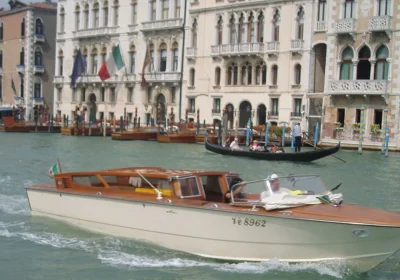Marseille is the second largest city in France, one of the largest ports in Europe and the Mediterranean, connected to the mouth of the Rhone by a canal. It was founded by the Greeks in 600 BC and named Phosea. As it was frequently attacked by local Celtic and Ligurian tribes in the III-II centuries BC, the city made an alliance with Rome in 123. From here the Roman conquests of Provence and Gaul began. During Caesar’s war with Pompey, Phosea was destroyed by Caesar’s troops.
In Marseille, which has a history of more than 2500 years, not many monuments of antiquity have survived. The oldest of them are the ruins of an ancient Greek temple (IV century BC) and fragments of Roman fortifications.
After the victory of Caesar, Marseille was revived again only in the X century, thanks to the Dukes of Provence. Then the Crusades contributed to the growth of Marseille’s commercial importance, as the city became the most important transit port – the road to the East.
In 1481, together with Provence, Marseille became part of France. During the Great French Revolution it supported the Republicans, it is not by chance that the anthem of France was called “Marseillaise”…
During the Napoleonic Wars, the blockade of the Allies again undermined the economy of Marseille, which blossomed once again with the opening of the Suez Canal, the development of industry, trade, colonial activity, maritime transportation of goods. This is the heyday of Marseille’s economy and cultural life. Then, as the colonies were liberated and the flowering of capitalism faced the first world crises, Marseille, once again, became poorer.
During World War II, Marseille became a major center of resistance. Until the 60s and 70s, the city was an equally significant center of organized crime, which the French police did deal with.
A key position in the city is occupied by the Old Port (Vieux Port), the bay where Marseille’s history began and where more than 3,000 small yachts dock today. Here is a daily seafood market: lobsters, crabs, sea urchins, oysters, almost every kind of fish in existence… From here you can go on an excursion to the island of Yves, where not only the Count of Monte Cristo was imprisoned.
The entrance to the port is protected by two ancient forts – Fort Saint Nicolas and Saint Juan (le Fort Saint Nicolas et Saint Juan), built by the Ioannite Knights in the XIII century and rebuilt in the XV-XVII centuries. Nearby – it would seem – is another fortress. But this is the church of Saint-Victor (Saint-Victor), built in the form of a castle to protect the once located here monastery. The church contains the burials of the first Christian saints, chapels carved in stone during the early Christian era. Since the cathedral existed here long before the split of the church into Catholic and Orthodox, both directions are at home here…
Old Marseille is located on the site of an ancient Greek city. Here you will find narrow, steep streets, small, almost rustic, squares, delicious restaurants… Unusual in power and beauty is the strange house and its chapel – a masterpiece of sculptor and architect – Puget. It is one of the most outstanding buildings in France. Old Marseille is surrounded by two ports – Old and new, ferry, where there are huge white-white Mediterranean ferries and ships leaving from here to Corsica, Sardinia, Africa. At the foot of the old town rises a huge and powerful cathedral, made in neo-Byzantine style – La Major (Cathédrale de la Major, 1852-1893). The huge cross-domed basilica reigns, dominating the city. It is a legacy of the Napoleonic III era, an era fascinated by gigantism….
Not far from the new ferry pier lies Place de la Joliette, near which are the City Hall (17th century), the Museum of Roman Trade Depots with amphorae for wine, grain and oil, and the Marseille History Museum with the well-preserved hulk of a 3rd century merchant ship.
The main axis and transportation artery of the city is La Canebière (La Canebière – la chènevière) – here were once fields of hemp, from which ropes were made, hence the name. It is a wide boulevard stretching east of the Old Port and is lined with beautiful buildings. Here were the famous Marseille cabarets, bars, theaters, once boiled nightlife … In Marseille in general is very developed “club life”. It is not without reason that Sir Francis Drake, Queen Elizabeth’s favorite pirate, moored in this port city in the days of the flibusters.
The main cathedral of the city can be seen from afar. It is the Cathedral of the Mother of God guarding Marseille (Sathédrale Notre Dame de la Garde). A gilded sculpture of the Virgin Mary reigns over the city. The Neo-Byzantine temple dazzles with its mosaics, candles, gifts left in honor of the salvation of sailors, views of the sea, the islands, Marseille… It is a mesmerizing place where the living heart of Marseille beats in the sway of millions of candles.
In Marseille there is a fashionable, modern part, with avenues and villas, and suburban ports, with the world’s best bouillabaisse (bouillabaisse – an ancient fish soup, which was so loved by Voltaire), palaces, theaters, beaches, the famous stadium, museums …
Marseille is the most ethnically diverse city in France. Among the natives of the city are Marius Petipa (1822-1910), a brilliant ballet master who staged all the famous classical ballets on the Russian stage. And soccer player Zinedine Zidane Zinedine, and Daniel – the hero of the movie “Taxi” …
Marseille is 25 centuries of European history in the glow of the azure sea and architectural heritage!

















